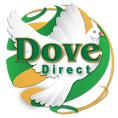Achieve Growth Through Integrated Solutions
Welcome to the Dove Direct Print and Marketing Blog. Today's post, "Achieve Growth Through Integrated Solutions," sheds light on Integrated Business Solutions, which, if approached judiciously, can drastically reduce the tide of unsustainable scale challenges in a niche universe. Before we begin, we want to congratulate the Los Angeles Rams and the Cincinnati Bengals, the best two teams in the quest to capture Super Bowl 2022!
Business marketing integration predates its emergence as far back as World War Two. The ensuing economic boom between the 1950s-1980s enjoyed the rise of consumerism, which led to the demand for mass production capabilities. During that time, the term 'integration' entered into marketing jargon. Integration as we know it today is more relevant, particularly when it comes to scaling. By 1989 many in the industry referred to integrated marketing, and more specifically, integrated marketing communications as defined by the American Association of Advertising Agencies (AAAA)
. According to the AAAA, integrated marketing communications is "a marketing strategy that recognizes the value of a comprehensive plan that evaluates the strategic roles of a variety of communication disciplines, advertising, public relations, personal selling, and sales promotions, and combines them to provide clarity, consistency, and maximum communication impact." Moreover, this definition also recognizes that marketing communications are more effective when holistically and strategically planned to ensure that the brand and its messaging remain coherent across channels.
Our Quote of the Day: "When we think of digitally disconnecting and inviting presence into our lives, we are creating the conditions of integration within and between." – Alanis Morissette
The Emergence of Audience Fragmentation
The year 1989 brought about a new digital era, which dramatically altered the marketing landscape. This period marks the beginning of the media transformation, which ultimately brought about subculture media fragmentation of mainstream audiences. Hence the book "Who Moved My Cheese" aptly describes the emergence of niche markets, where for the first time, marketing strategists were in search of mass targets that had once been relatively easy to reach. We now understand that cable, VCRs, computer gaming, and mobile devices are media choices that the public is willing to consume. In addition, the industry experienced another shift in the 1990s with segment-based television programming to attract various audiences with more precise and personalized content. This phenomenon continues to this day.
The Era of Connectivity
By 2022, a new era is underway, emphasizing connectivity. Further, digital and physical convergence requires media to offer convenience, experience, precision, and responsiveness as the public moves beyond the web to mobile devices powered by data and digital technology.
The IoT (Internet of Things) is also known as - device object connections results - where there is a need to integrate more people, messages, formats, and functions across various digital and physical platforms to address customer journeys. To be seamless, data and technology must align marketing strategies with the customer experience. In addition, there are also considerations that these processes will require budgets and timelines that are shorter and smaller.
Integration in this era will require connecting and building the brand's value ecosystem, which will allow data and technology to seamlessly flow within the brand's infrastructure, thus eliminating the silo approach.
Brands and Ecosystems
Simply put, an ecosystem brand purview acknowledges the requirement to put forth a connected value in the consumer world. Brands that commit their entire ecosystem to achieve value and growth do not focus on traditional marketshare levers such as product, price, and category. Instead, these ecosystems concentrate on solutions and needs that fit seamlessly.
For example, brands such as Apple, Lego, Amazon, Ikea, and Disney are considered ecosystem brands that deliver top-rated brand valuation, including innovation, attributable to a divergent customer experience, increased loyalty, and better personalization. Each brand employs its core to address peripheral consumer needs, intending to become a one-stop-shop delivering complementary solutions.
An excerpt from a recent WARC article entitled "Why the Future Belongs to Ecosystem Brands" states, "The most effective ecosystems are defined not by costs and defending market share but by revenues and creation of new markets altogether, which better satisfy real human needs. The most successful ones take it to the next level by becoming ecosystems that offer an interconnected set of services or solutions that allow users to fulfill a wide range of needs in one integrated experience."
The Integration Factor
Looking back to the productivity focus of the 1980s, which was about power, the 20s represent a massive shift toward sustainability and systems. Growth at scale is becoming less sustainable. The counter to scaling is growth through integration. Integration benefits exceed efficiencies and are much more substantive. The focus of integration is not to reduce complexities to achieve efficiencies. Instead, it is about rewiring the complexity that connects the various pieces to function better concurrently. This process will unlock neglected value and create new value through ecosystems. One of the chief concerns regarding establishing an ecosystem environment is the removal of silos. Further, the integration factor will allow brands to implement the necessary technology while activating the essential data.
An Example of Marketing Integration
Marketing integration should be an all-inclusive approach establishing a seamless customer experience while achieving scalability. With digital and physical converging, sticking to a singular technique for publishing marketing communications will result in potential targets left out of the messaging loop. No brand can afford a digital strategy that consists solely of a website, email marketing, social media, videos, and blogs. The unknown or the what-if factor comes into play. For example, what if a pandemic occurs. Indeed, the pandemic has shown that digital overload can and does happen. According to many marketers, 50% of digital advertising misses the intended targets. Therefore, the brand should consider adding a physical component to the mix, a direct mail marketing piece, outdoor billboards, or telephone marketing. The marketing message appears in a less-competitive environment by adding another marketing element that directs recipients to a digital destination. There is a greater probability that the intended target market will see, read, and respond to the communications. The trick is to ensure that the integrated physical creative reflects the same visual footprint as the digital destinations.
Although this is a simple approach to adding physical marketing to uplift the digital, brands can build on this premise depending on the budget. Larger budgets can develop additional, more complex integrated solutions such as real-time data collection, sorting and transferring collected data, server access from remote client locations, and more integrated communication types that ensure a dedicated, personalized consumer experience.
The Net-Net
As we continue to discuss new ecosystems, the bottom line is that integrated business solutions mean bringing multiple options concurrently to impact the bottom line positively. Each brand will guide its unique requirements for integration based on fragmentation, complexity, and connectivity. It is also critical to remember that the brand's effort to be relevant and meaningful to its target market is at the center of integration and connectivity. Thanks for reading "Achieve Growth Through Integrated Solutions!" We wish all a Happy Valentine's Day.
Let's have a conversation about integrated business solutions and how they can help grow your business, change behavior, and improve the customer experience. Let us show you how to improve your document processes to optimize your workflow, reduce costs, and maximize your organization's printing, letter shop, and mailing capabilities. Dove Direct does have an official USPS certified bureau located within our offices that will save you time and money. We can even create a demo file for you. For more information, call Carla Eubanks at 404-629-0122 or email Carla at This email address is being protected from spambots. You need JavaScript enabled to view it..
Dove Direct, your Atlanta based print and mail solutions provider, offers organizations end-to-end data, printing, and mailing solutions:
- Data Management
- Variable Digital/Data Printing
- LetterShop and Fulfillment
- Digital Mail Scanning Services
- Fully Automated MLOCR Presort Bureau
- Marketing and Production Management Support
- Secure Data Life Cycle Management
If you don't want to wait, you can reach Dove Direct today by calling 404-629-0122 or using the Contact Form for Dove Direct.





